Every 11 years, the Sun’s magnetic pole flips, giving us on Earth the opportunity to see increased geomagnetic storms and aurora displays. Fascinatingly enough, nowadays, thanks to high-level technology, some people are able to catch these remarkable sky events next to their homes.
Astrophotographer Andrew McCarthy surprised millions of his followers on social media when he recently shared his highly detailed views taken right from his backyard in Arizona of the sunspot named AR3697.
More info: Andrew McCarthy
Region 3697 (formerly 3664) generated an X8.7 solar flare on May 14, the largest recorded of Solar Cycle 25 so far, and doesn’t seem to be calming down
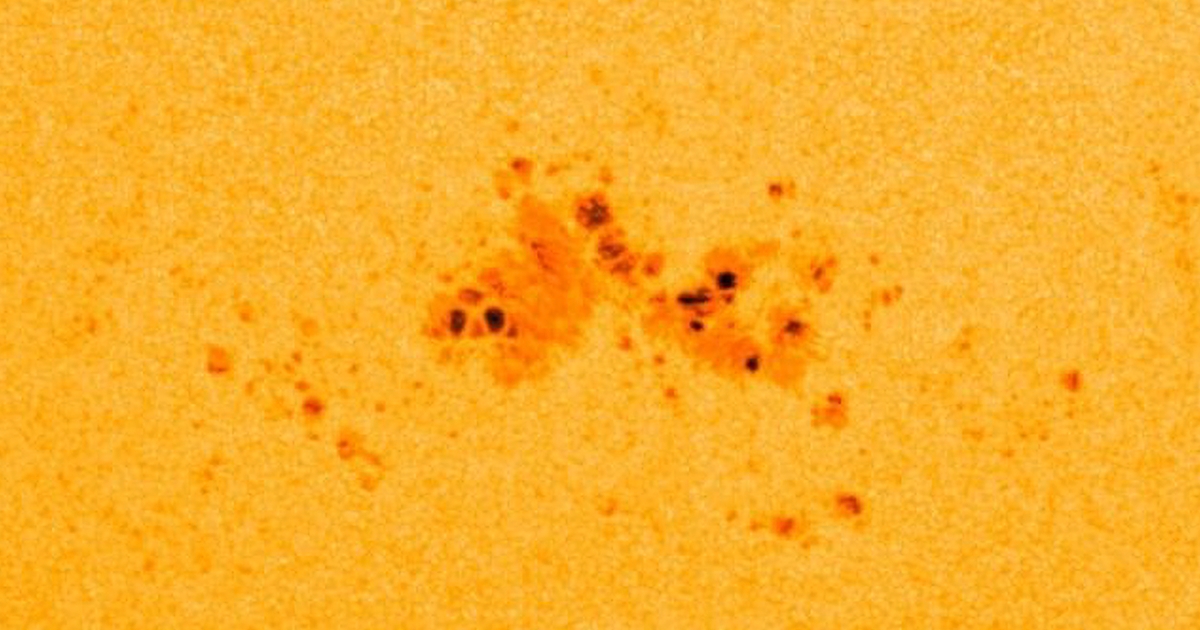
Image credits: NASA
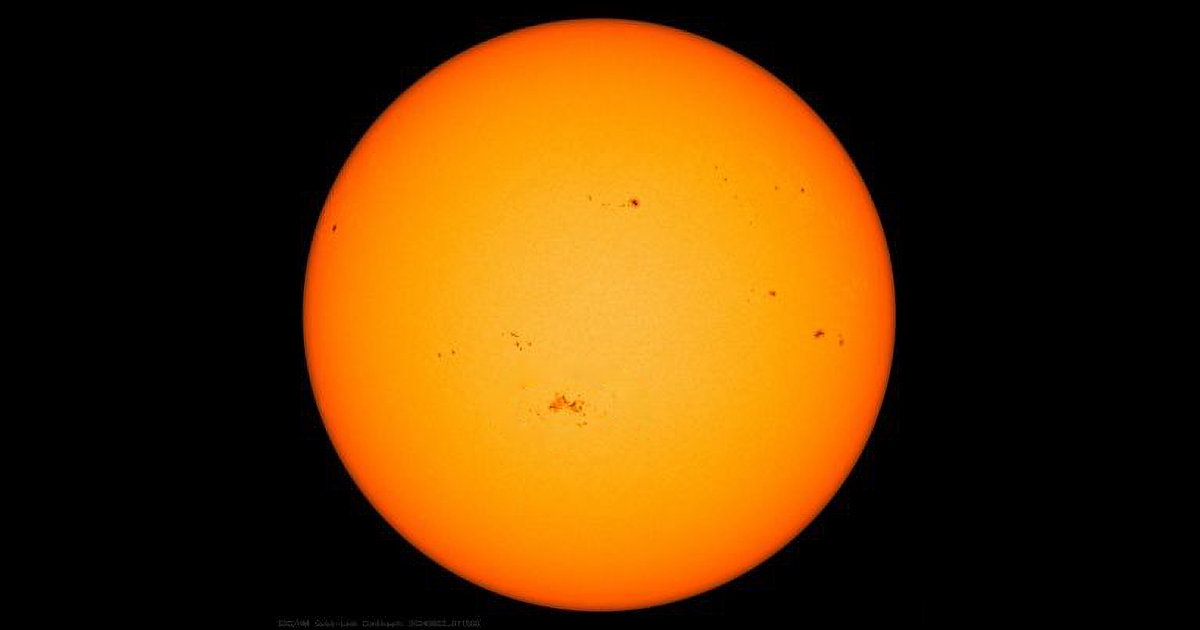
Image credits: NASA
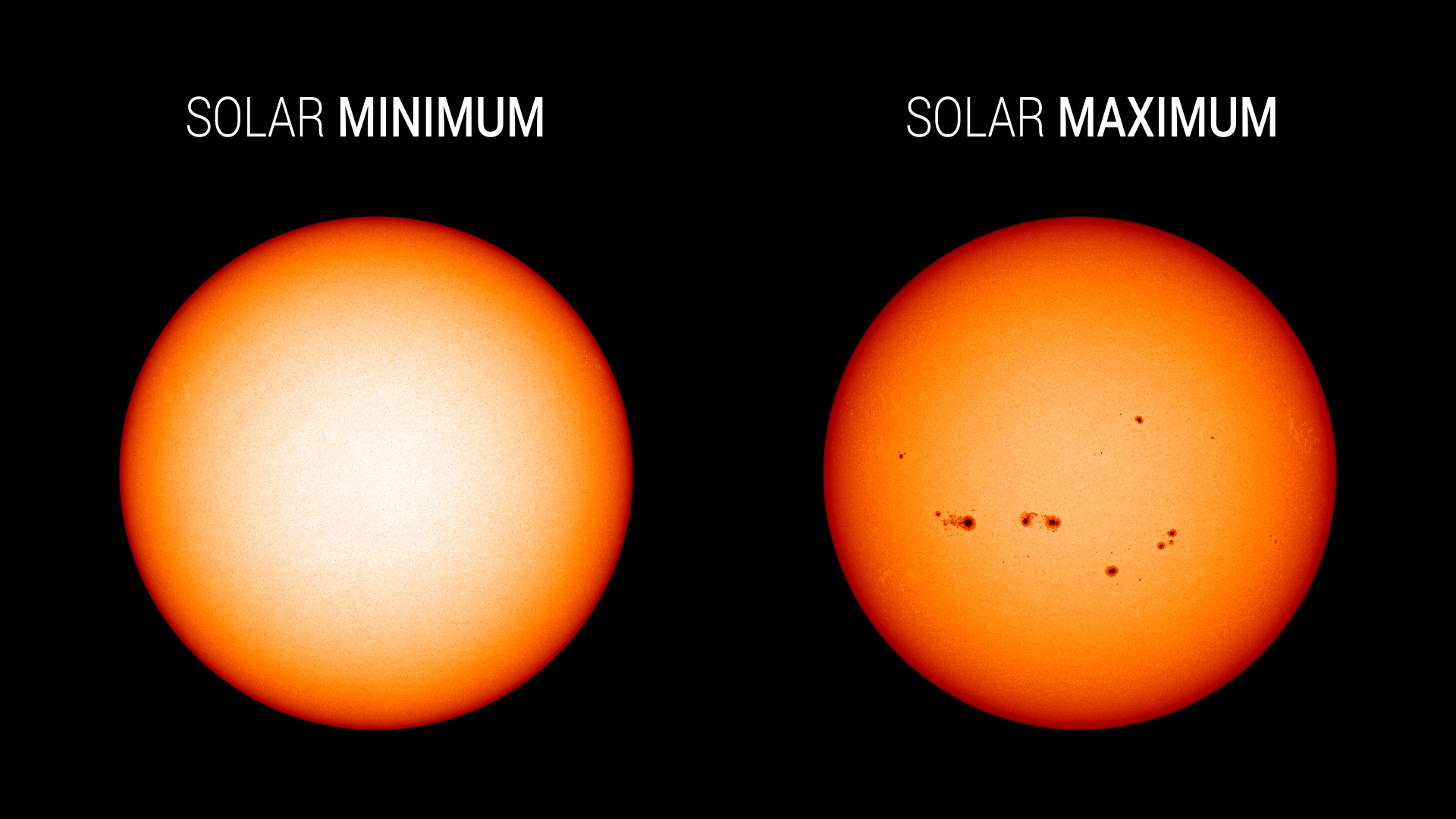
Image credits: NASA
The are times when our Sun is calm and quite inactive, yet every 11 years or so, its activity begins to build up in multiple strong outbursts from the solar surface. According to Associate Professor of Astronomy Douglas Leonard, right as the polarity of the Sun is about to flip, we are able to witness a strong increase in its sunspots, flares (eruptions on the Sun’s surface), and even coronal mass ejections (huge amount of solar plasma that is thrown out into space).
The sunspots are known to be directly associated with auroras and the one at the time, named AR 3664, brought lots of attention in May. This huge sunspot region about a month ago sent a bunch of coronal mass ejections, or CMEs – expulsions of plasma and magnetic field – towards our planet, leading to a Category 5 geomagnetic storm (the most powerful class) and glowing skies with incredibly beautiful auroras far beyond their normal ranges.
Since the Sun rotates on its axis, the remarkable sunspot that made its journey around the Sun and reappeared was renamed AR 3697. According to scientists, this region (formerly 3664) generated an X8.7 solar flare on 14 May, the largest recorded of Solar Cycle 25 so far, and is still very much active as we can see in recent photos and videos shared by astrophotographer Andrew McCarthy.
Andrew McCarthy has been documenting AR 3697 sunspot in great detail from his backyard in Arizona
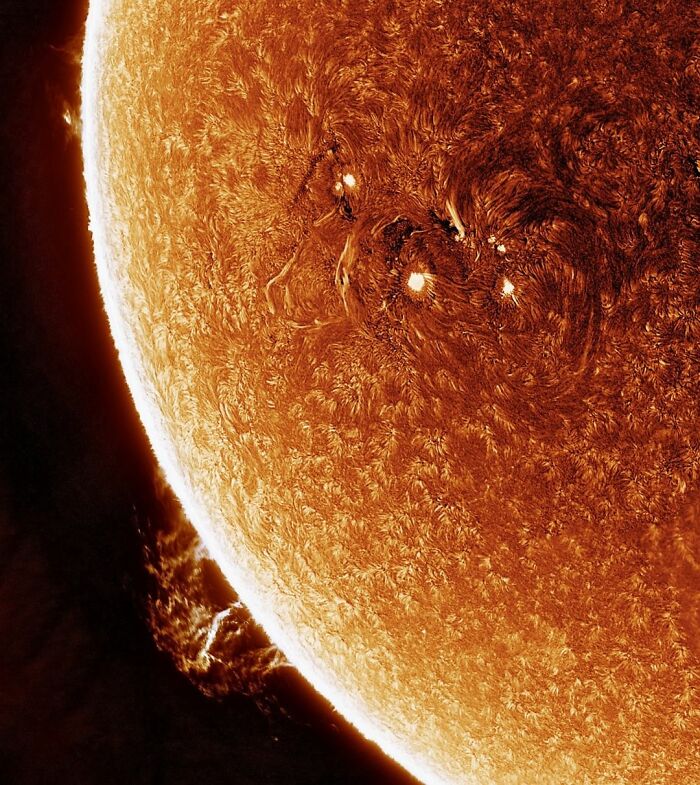
Image credits: @cosmic_background
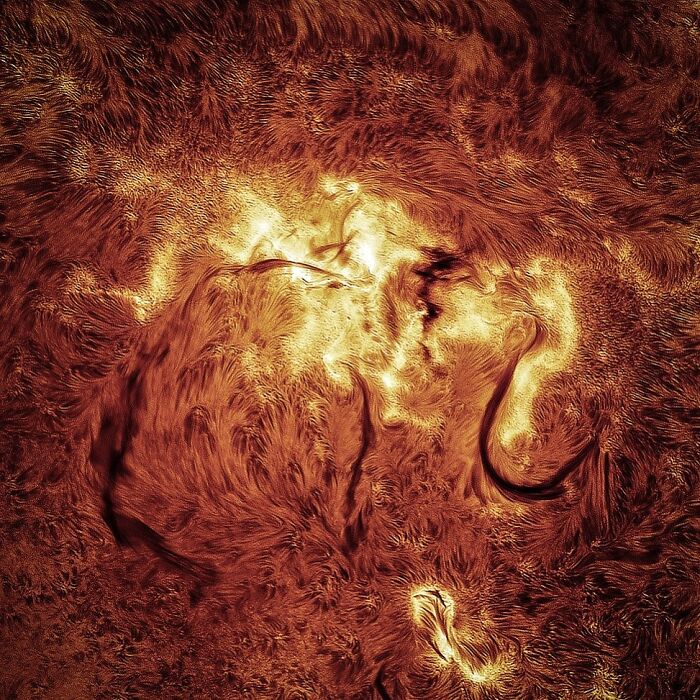
Image credits: @cosmic_background
He has been documenting the famous sunspot’s return with daily time-lapses and livestreams on social media. “WOW! This is the same active region that caused those aurora a few weeks ago. It’s finished rotating around the back of the sun and ready to cause some havoc again!” McCarthy shared the exciting message, together with an incredibly detailed video of the X-class flare.
“This is a time-lapse video I recorded over a period of roughly 90 minutes – you can watch how the sped-up plasma dances like flames… Except the ‘flames’ are larger than Earth,” he added, showing impressive plasma loops dancing across the Sun’s surface.
The astrophotographer who’s based in Arizona started capturing the Sun in 2019. “I started shortly after I began astrophotography, once I learned how to safely modify a telescope to capture the details in the solar atmosphere,” McCarthy shared in an interview with Bored Panda.
Asked about how the entire process of capturing the Sun in such a detailed form looks, he told us that it would take a long time to explain, yet the most challenging part is getting the atmosphere to cooperate.
“As turbulent air distorts fine details of any celestial object at high magnification, to overcome this I use a process called ‘lucky imaging,’ which involves capturing thousands of photos in a short time, and stacking the best percentage of them into a single photo,” he explained.
McCarthy finds the Sun truly special and cannot point to his favorite photo since all of them are special in some ways.
“It’s like saying I have a favorite snowflake. They’re all equally beautiful yet unique!” said McCarthy. “Unlike other celestial objects, the sun is different every time I photograph it. That makes it very special to me!”
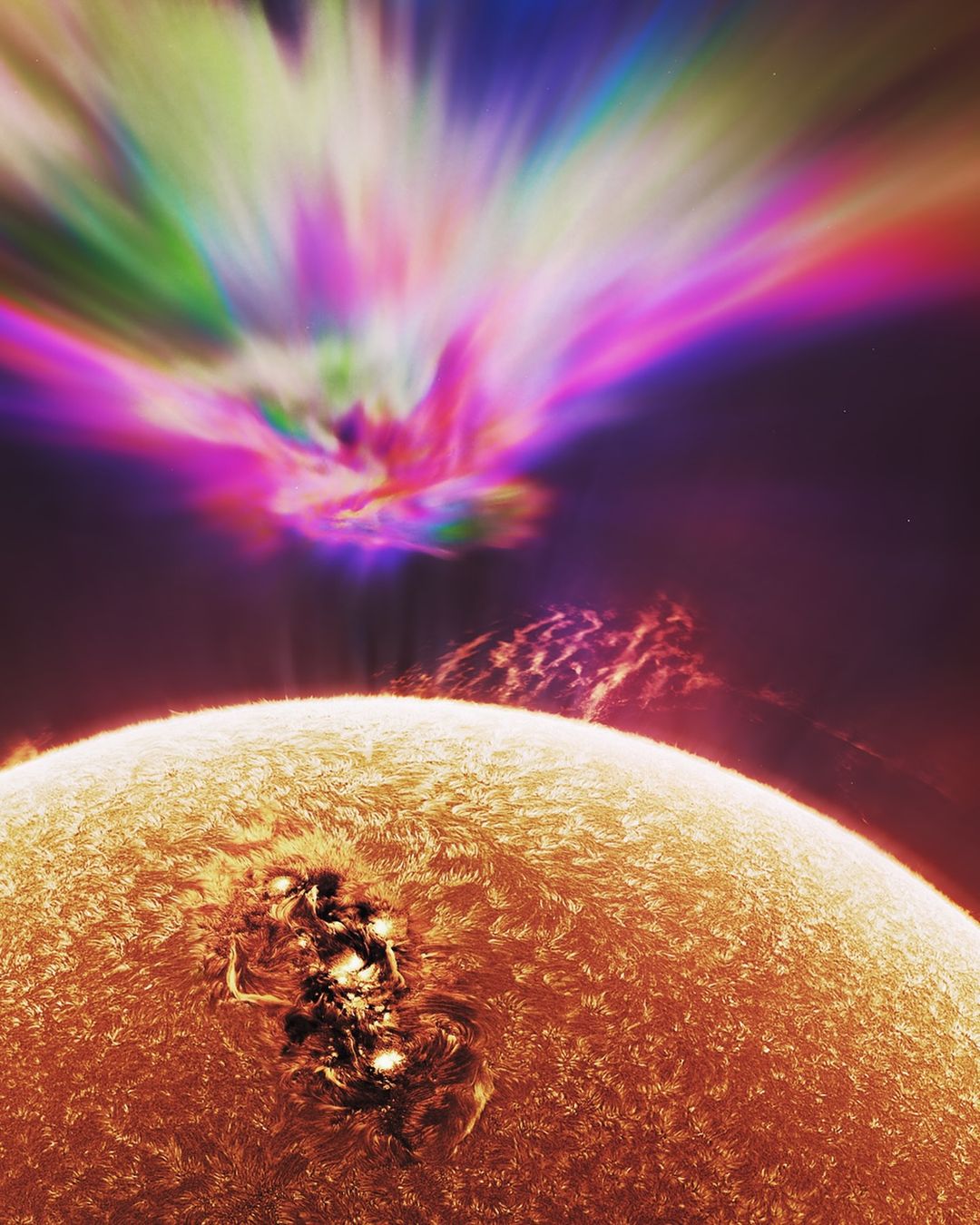
Image credits: @cosmic_background
According to scientists, the current solar cycle began in 2019 and there are predictions it will peak sometime in 2024 or 2025 before returning to a lower level of activity in the early 2030s. Therefore, I guess we should be still keeping an eye on the heart of our solar system, since the Sun is very likely to surprise us with another magnificent flaring.
People on the internet were mesmerized by extremely detailed photos of the sunspot region AR 3697
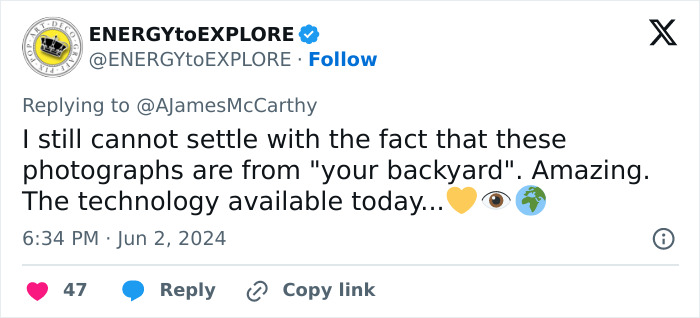
Image credits: ENERGYtoEXPLORE
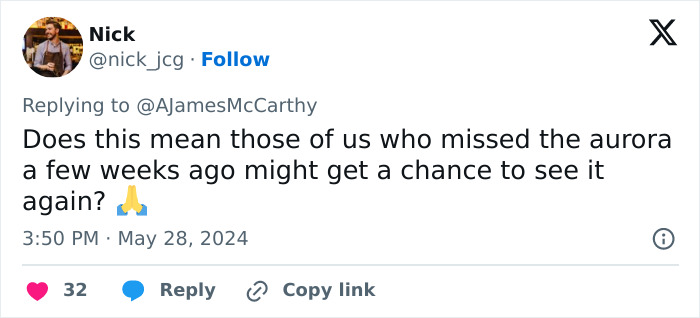
Image credits: nick_jcg

Image credits: Visionaledge

Image credits: AliceintheXland

Image credits: SyeClops

Image credits: Shamara_Myers

Image credits: stuffed

Image credits: JoelWard2000

Image credits: kubectlget

Image credits: GeorgeConway08

Image credits: IamMagenWinn

Image credits: BostonEventBook

Image credits: StephenHoey13

Image credits: RTEdmonds
The post The Sunspot Region Responsible For The Mesmerizing Auroras In Early May Is Back first appeared on Bored Panda.











 English (US) ·
English (US) ·